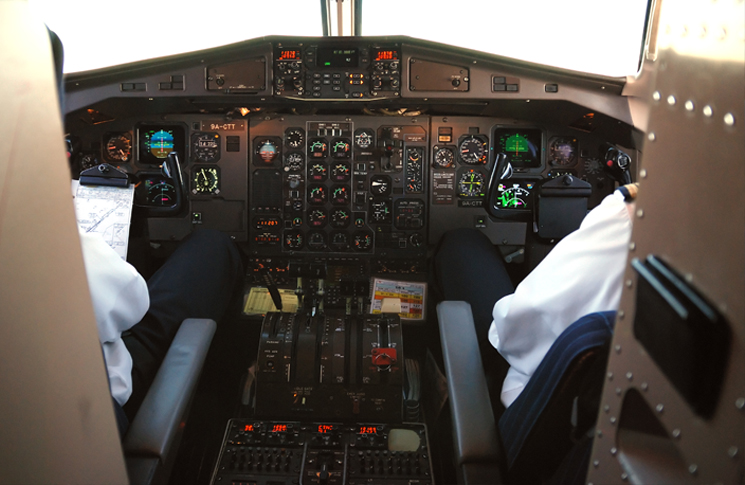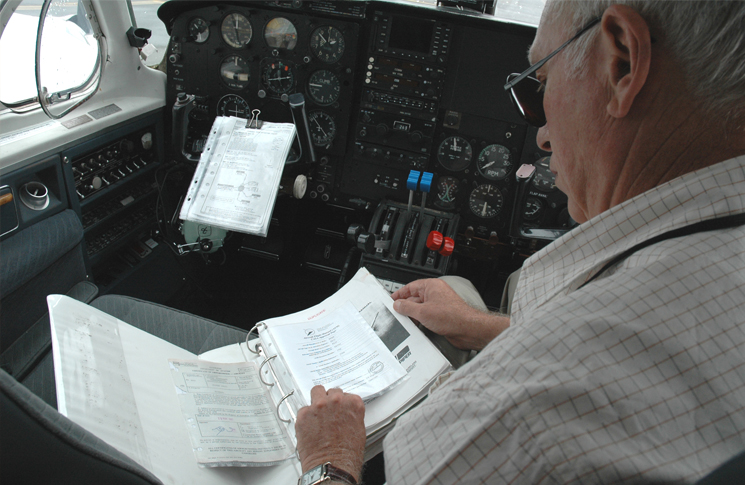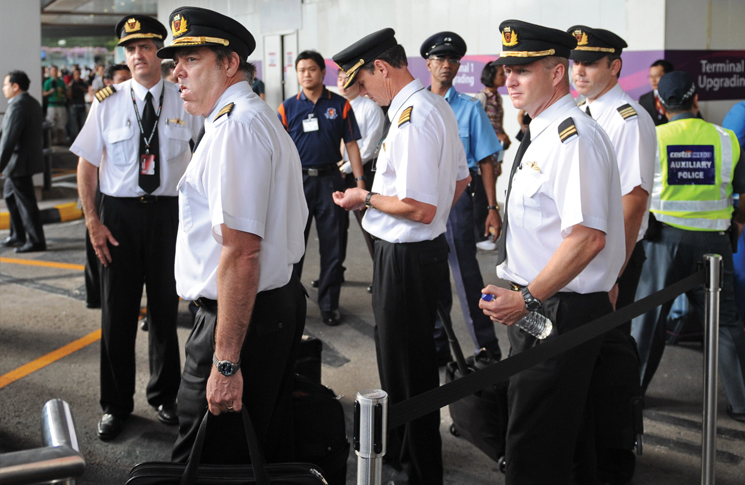The pilot of Qantas flight 32 on the importance of teamwork in aviation
Richard de Crespigny never achieved his youthful ambition to be a fighter pilot. And he’s OK with that. Most of his air force career was spent flying Caribou transports and Iroquois helicopters. He actually made the RAAF’s F-111 course but was cut when two course instructors left to join the airlines. Even at the time he saw this as a blessing in disguise. As he later wrote, ‘my years flying transport operations had conditioned me to the pleasures of working in teams with other pilots or passengers.’ He quit the air force and joined Qantas.
Years later, when the No. 2 engine on Qantas flight 32 exploded his commitment to teamwork was both tested and confirmed. De Crespigny was pilot-in-command of what became a five-person crew by result of circumstance. After 105 minutes of assessing, discussing and managing the many problems caused by shrapnel from the explosion of the engine, the aircraft landed safely. Still later, after a secondary crisis involving an engine that could not be shut down, all passengers and crew left the aircraft safely.
‘You make the most, not just of yourself but of the team, and you must make an environment where everything comes together and the synergy becomes greater than the parts,’ de Crespigny says.
In the RAAF, de Crespigny had been dismayed by the rampant egotism he saw in jet fighter pilot culture of the time, although he understood the tendency and even the need for such an attitude on the front line. But for a civilian pilot working as part of a crew, jettisoning ego is a first requirement, he says.
‘You have to know why you’re there; in the cockpit you’re there for the passengers and the captain’s ego must suffer if that’s going to improve safety. The autocratic captain is really a thing of the past. Captains have to make decisions, they have to make final decisions and they might even overrule someone else, but you still need everyone to put their views forward to come up with the best solution. That’s why communication and trust are critical. When the captain makes a decision people should not be surprised by what the decision is.’
Leading a crew is much like business management, with one important difference. ‘There are many ways to make decision, at different speeds, but sometimes there’s no time for a decision-making process, and the captain has to act. That’s what separates us in aircraft cockpits from boards and committees—we don’t have the luxury of deferring a decision.’
An effective team requires an environment of mutual trust and respect, de Crespigny says. ‘There’s a great term by Adam Grant in a management book, Good to Great. It’s the leader, who has a fierce will blended, paradoxically, with humility and vulnerability. A fierce will to get the job done and the humility to welcome advice from everyone else on the team.’
Humility is a discipline. ‘I never question the ability of the person who sits beside me on the flight deck,’ de Crespigny says. ‘I know what they’ve been through, I know they have suffered during simulator checks, I know they are qualified. They deserve my absolute respect.’
‘When I start a flight I’ll say to the other pilots, “I am the captain but I’m going to make mistakes. They’ll be unintentional mistakes but I’m going to make them because I’m not perfect. It doesn’t worry me that I make mistakes, but it is vital that you pick them up, so I need you to be pedantic so we catch every mistake.” ’

The importance of debriefing
Richard de Crespigny’s other priority is debriefing, to learn immediately from good or bad performances. Unusually, he conducts two debriefs on every flight. ‘I debrief at top of climb and at the end of the flight. You debrief when people’s memories of bad things are fresh, because memories of bad things, such as their errors, fade quicker than memories of good things. We discuss the whole process—flight planning, preparation, pre-flight, start, taxi, take-off and climb. There’s no ego, no-one is trying to lower the dignity of everyone else. I will raise failings or mistakes of mine, to encourage others to bring out theirs. Anyone can introduce a topic and often you discover things.’
He describes the debrief as ‘a friendly environment but it’s where deep learning happens. In aviation, there’s not that much post-licence training, really. Mostly it’s checking, which is different. Debriefs are one of a few opportunities to learn and I think they are critical. You accept failure in the little things as a cost of learning so that you get the big things right.’
He says debriefs are also about setting an example, bringing the best out of the team and accepting that failure is part of the human condition. ‘Individuals can’t be perfect, but teams can.’
‘Also, we have many more successes in aviation than failures. A debrief should discuss what we have done well and reinforce those good things. We should be learning from our failures and successes.’
The result of a well-developed crew is a level of teamwork and performance that no automated flight control system can match. ‘When you piece all these things together you realise resilience of the flight is a wonderful experience of teamwork, common mental models and empathy. When everyone’s participating and feels valued and welcome, when you get that, you start to feel proud and confident in the team. You have to go through a phase of vulnerability and humility to get to the well-founded feeling of being confident and courageous. The term I use in my book Fly is “bullet proof, not gun shy”. You are prepared to take measured risks because you know you have prepared, are prepared and can handle it.’
He likens it to the experience of musicians playing in a tight group or to being part of a winning sporting team. At the same time, he is aware of the danger of groupthink, where team members go along with whatever solution is presented to them. ‘To counter groupthink everyone should gather their own data and make their own decisions independent of others, especially their superiors,’ he says.
One for all, all for one
The team concept extends beyond the flight deck. In the case of QF 32 it encompassed cabin crew, police, firefighters, ground staff, the Qantas crisis centre, and the passengers. ‘QF 32 was a celebration of the way all these teams worked together, did what they needed to do, in an environment where there was often no communication,’ de Crespigny says. ‘It all worked, thanks to shared mental models and people having the same values and beliefs, and keeping situational awareness.’

And it extends into general aviation which is overwhelmingly a single-pilot sector. The need for mentoring, reinforcement, support and discipline is greater here than in air transport, de Crespigny argues.
‘Single pilot IFR at night has to be one of the hardest things you can do in aviation. It’s an environment where deviance can become normalised because there’s no-one else there to check you,’ he says.
‘As a single pilot you have no mentor in the cockpit. You have to look elsewhere. The single pilot needs to reach out to organisations and social groups, to reach out, be honest, be open and learn.’
An important part of this learning are publications such as Flight Safety Australia, de Crespigny says. ‘You publish where things go wrong so many can learn from a few. You can never learn sufficiently from your own experience. That’s why crash comics are so important.’
‘Even a single pilot is part of two teams—the system team of ATC, LAMEs and ground staff, and they are also part of the fellowship of aviation. It’s important to enter that fellowship, whether in the hangar, online or in print, and learn from it. Drink from the well of knowledge.’
Loneliness in the cockpit is a survival hazard, de Crespigny argues. ‘You’ll normalise deviance and you’ll drift into failure and it will be insidious and inevitable. As I wrote in Fly!, experience can be a curse. When you build up a great deal of experience and survived, despite having drifted you can think you are indestructible. If you allow your skills and procedures to decline, invariably there will be a situation where the deficiency will become critical. You will fail when you least expect it and not understand why. You see this in the continual stream of accidents involving experienced pilots.’
The solution is to engage with the industry so that solitary hours behind the controls become an interlude in an otherwise social activity. And the most purposeful way to engage is to seek continual improvement in your performance and qualifications. ‘To be a pilot you must be confident and courageous, but you earn that by going out of your comfort zone, in simulator exercises and by continually learning, both formally and informally. If you’re not doing that your confidence can be a mask for complacency. You have to challenge yourself.’



Comments are closed.